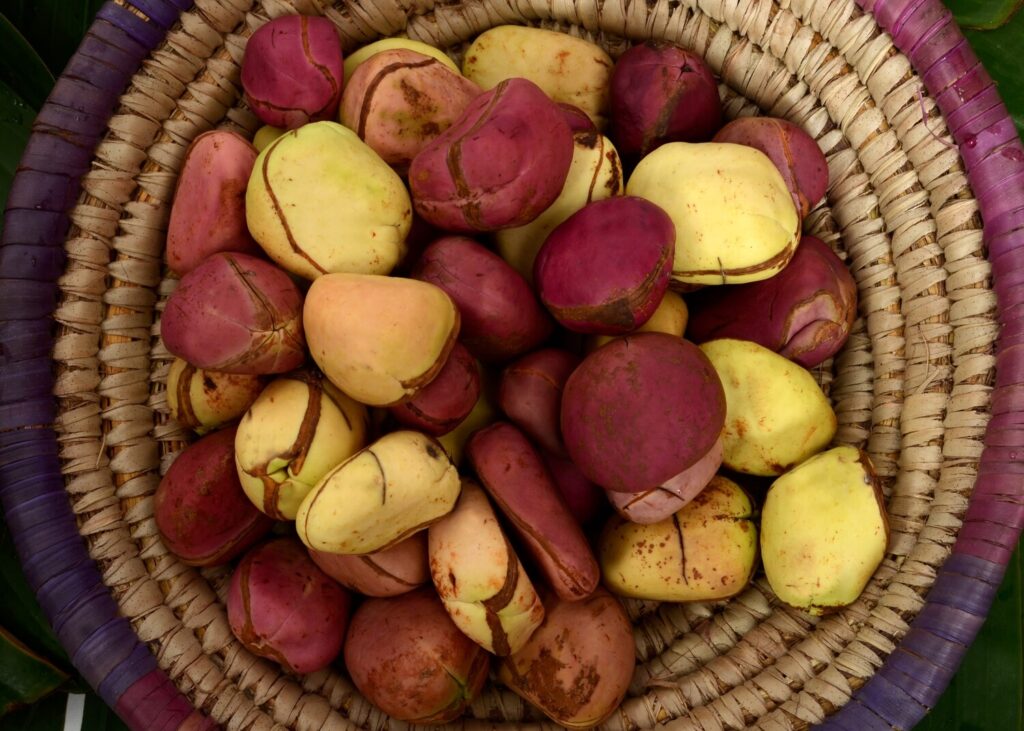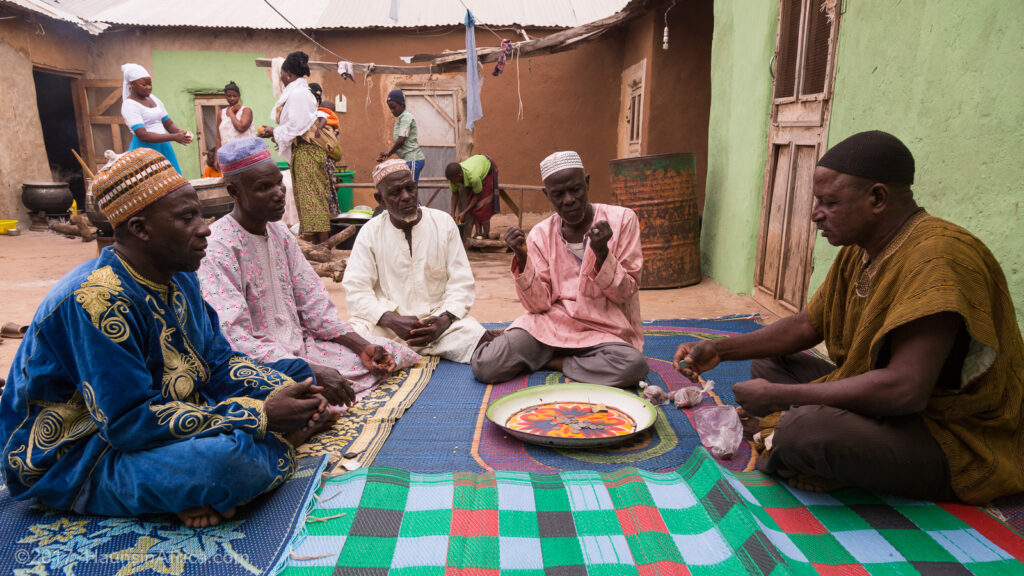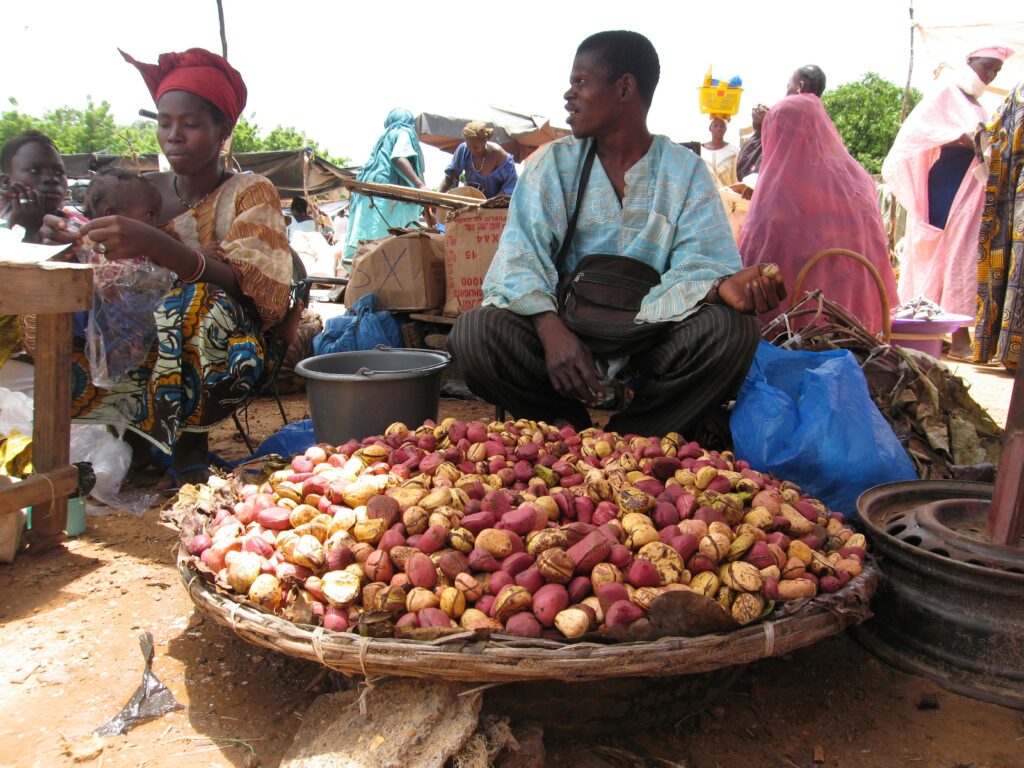When you see people breaking kola nuts, it is an atmosphere of joy—it could be that they are getting married, they are blessing their new child, or they are celebrating the prosperity in their community. Whatever the celebration is, just know that kola nut is not found in a place of weeping and sorrow.
All tribes use kola nut for different reasons. The major ethnic groups (Hausa, Igbo, and Yoruba) use kola nut for many reasons according to their various traditions. For instance, the Igbos break the kola nut when brothers are celebrating a wedding ceremony, while the Yorubas break the kola nut when they are celebrating a new child. On the other hand, the Hausas break kola nut during religious activities.
It is noteworthy that these ethnic groups use kola nut when necessary and as indicated in their culture or doctrine. Also, people from these tribes eat kola nuts (especially the Yoruba tribe). According to them, it makes the teeth stronger and clears the throat.
The word “kola nut” typically refers to the seeds of specific Cola species of plants, which were originally classified as members of the Sterculiaceae family of cocoa but are now more commonly included in the Malvaceae family of mallows (as subfamily Sterculioideae). These cola tree species are indigenous to the tropical African rainforests. Their caffeine-rich seeds are employed as flavouring components in a variety of carbonated soft drinks, giving these drinks the name “cola.”
In this piece, Naijabiography will reveal the origin of the kola nut and its significance in different cultural practices.

History
As trade over the Mediterranean became more frequent in the 17th century, there seems to be a connection between the proliferation of the kola nut throughout North Africa and the expansion of Islam there. Given that slaved Africans frequently had to drink tainted water, the kola nut was especially helpful on slave ships for improving the flavour of the water.
About three hundred years ago, the Sokoto people of Nigeria became aware of the benefits of kola nut. Therefore, the availability of exchangeable goods via barter had made it easier for Sokoto kola merchants to engage in long-distance trading (such as salt, Nitron, hide and skin, onion, grains etc). These tradeable commodities served as the local natural resources for commerce and human consumption.

History indicates that Hausaland residents traded kola nuts with various regions of West Africa prior to the Sokoto jihad. Even though a variety of goods were traded between Sokoto and Kurmi in the southwest and Asante (Gwanja) in modern-day Ghana, the Sokoto people have typically singled out kola as the good they are most interested in.
Kolanut use among the Sokoto people was prominent in their religious, social, and ceremonial activities and has a long history in the city of Sokoto. Marriage, naming, and coronation ceremonies all involve the use of kola nuts. In particular, in Niger, Nigeria, Sierra Leone, and Liberia, kola nuts play a significant role in the traditional spiritual practices of culture and religion.
The Manu Dibango song “Goro City” from the 1970s emphasizes the importance of kola nuts, or “Goro” in Hausa, to Niamey, the capital of Niger. During religious ceremonies and important life events, including naming ceremonies, weddings, and funerals, kola nuts are used as a religious object and sacred offering. Only kola nuts with four lobes are appropriate for this purpose.
A skilled diviner interprets the resulting patterns after casting the objects onto a unique wooden board. A small number of Yoruba individuals have also begun to use it at Muslim marriages and other occasions. They served as a type of currency for West African ethnic groups like the Malinke and Bambara of Mali and Senegal. In some cases, such as when haggling over bride costs or giving a host gift to the village elders after relocating there or starting a commercial relationship with the community, they are still used as such today.
Similar to coffee berries and tea leaves, kola nuts are believed to have been used by humans for a very long time. Many West African communities chew it as a form of mental stimulation in both private and public situations.

The Significance of Kolanut in West Africa
The kola nut, which predominantly comes from the species Cola acuminata and Cola nitida of the genus Cola, contains caffeine. A 20-meter-tall evergreen tree called Cola acuminata features long, ovoid leaves with pointy tips and a leathery texture. The trees grow star-shaped fruit that typically has five follicles and cream blooms with purplish-brown striations. A dozen or so prismatic seeds grow inside each follicle and are encased in a white seed shell. The nut smells pleasant and floral. Initially bitter, the flavour becomes sweeter as you chew. To get the caffeine out of the nut, boil it.
The bitter-tasting kola nut contains caffeine. It is chewed in both communal and private situations in several West African nations. It is frequently utilized in ceremonial contexts and given to chiefs or guests. In folk medicine, kola nuts are used as a cough treatment and are thought to help with digestion when ground up and combined with honey.
Although kola nut extract is no longer used in popular commercial cola drinks like Coca-Cola, kola nuts are likely best known to Western culture as a flavouring ingredient and one of the sources of caffeine in cola and other beverages with a similar flavour.

Kolanut in the Modern Day
The U.S. Food and Drug Administration (FDA) has classified kola nuts as generally safe for human consumption. Extract from kola nuts is regarded as a natural culinary flavour. Kola extract has also been authorized by the FDA for use as an inactive component in some medications.
In recent times, mounds of kola nuts are available for purchase in every market, bus station, and convenience store in West Africa. For underprivileged rural farmers, it is a key cash crop. Many people chew them every day to get their caffeine fixed.
However, in the present day, kola nuts are mostly sold and consumed by elderly people. According to opinions gathered from young people, kola nuts are too bitter and they produce bad breath and brown teeth.





